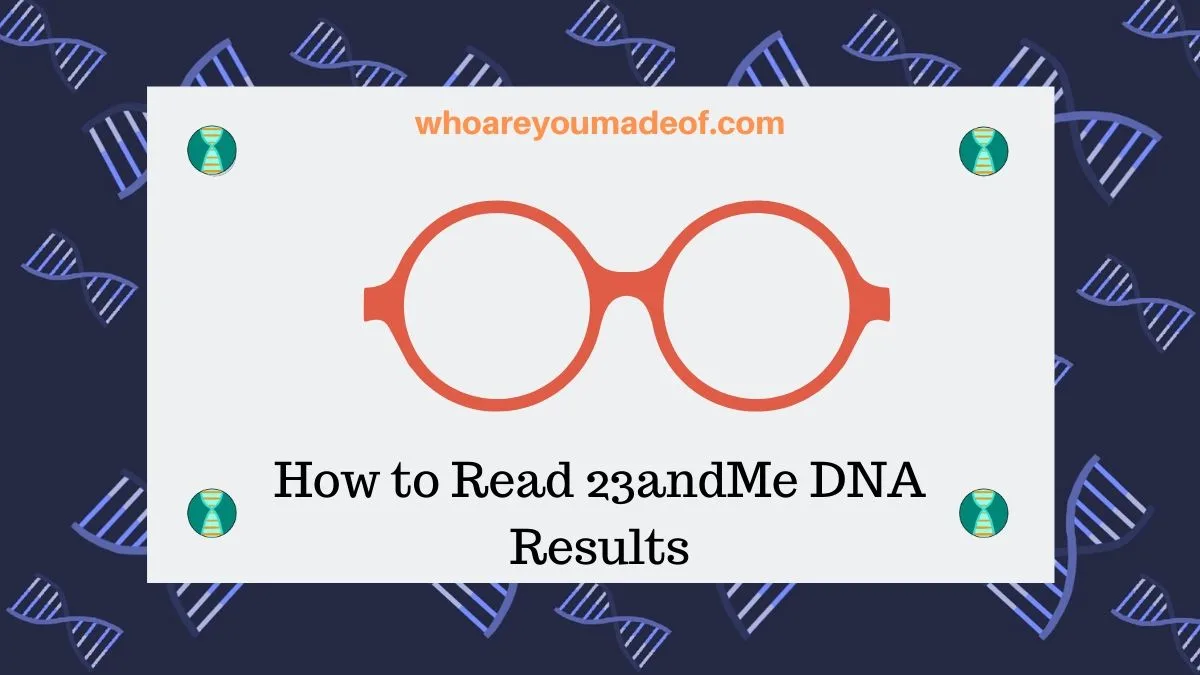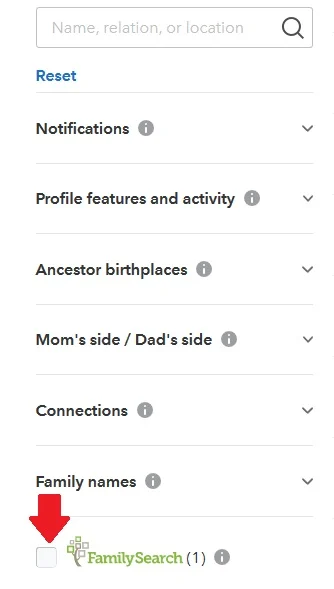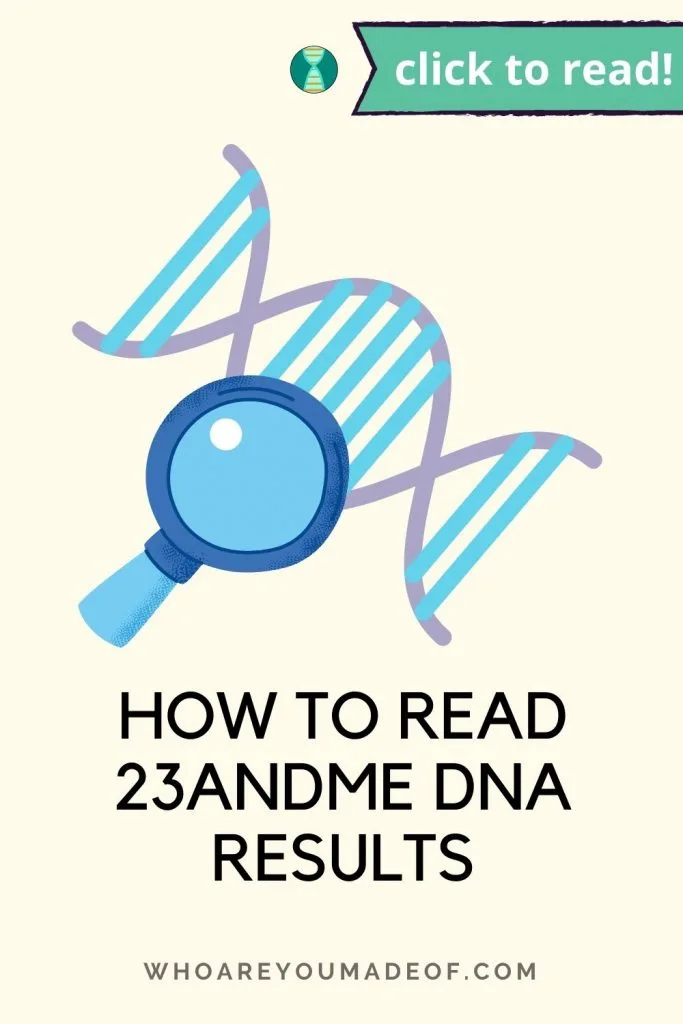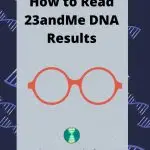Did you do a DNA test with 23andMe? In this post, learn all about how to read your 23andMe DNA results.
You will also find out:
- What you can learn from your 23andMe results
- Whether your results are accurate
- How to find family trees on 23andMe
- How to print and download your results
23andMe offers a really amazing DNA testing experience and some of the most complete DNA results available. I've been involved in DNA testing for several years now, and have either tested myself or other family members with every major company.

I love exploring 23andMe results and it seems like I learn something new each time I log in to my account. My hope is that you learn as much as I have from your results.
What can you learn from your 23andMe results?
23andMe DNA results are quite comprehensive! In this section of this post, I'll explain how your DNA results are organized so you can be sure that you won't miss anything.
Your 23andMe results are organized into three main sections: Ancestry, Health and Traits, and Friends and Family. You can access each of these main sections from your main dashboard when you log in by clicking the labels on the top menu, and you can easily switch between these sections no matter where you are in your results.
Each section is divided into additional sub-sections, as seen below.
Ancestry
In the Ancestry part of your results, you will be able to learn about your:
- Ancestry composition, an estimate of where your ancestors likely lived over the past several hundred years (ethnicity estimate)
- DNA relatives, a list of people who share DNA with you (DNA matches)
If you choose "Ancestry Overview", you will see a summary of your Ancestry reports, which you can explore in greater detail. This is also the easiest way to access your maternal and paternal haplogroup reports.
Can I just give a shout-out to 23andMe for including haplogroups in the results? It's really an amazing bargain to learn this information for the cost of the test.
It's good to spend some time looking at all of your Ancestry reports and to click through to every screen. There is an incredible amount of detail available.
To learn more about how to explore your Ancestry results on 23andMe, I would recommend reading this full tutorial:
Health and Traits
If you ordered the Health test from 23andMe, you can access the results here, along with trait information. If you only got the Ancestry report, you will be able to see your Traits here.
I don't discuss health results on this website, primarily because I am not a medical professional. There are lots of great resources on the 23andMe site, however, that can help you navigate these results.
Friends and Family
The "Friends and Family" section is my favorite, because this is where you can learn the most about your DNA matches. The sub-sections here are:
- View all DNA Relatives
- Family Tree Feature (automatically populated family tree)
- View connections (people who have shared their results directly with you)
- Advanced DNA comparison (chromosome browser!!)
The DNA Relatives is a very exciting and useful part of your 23andMe results. This is where you will a list of all of the 23andMe customers who share DNA with you.
Someone who shares DNA with you is your genetic relative and is related to you in a genealogical sense. In order words, you would find them somewhere in your family tree.
This section of your DNA results is most useful to those of you who are interested in building your family tree. I strongly recommend building a basic tree in order to learn as much as you can from your DNA results.
Are your 23andMe results accurate?
It's very common to wonder whether DNA results are accurate, whether they are from 23andMe or any other company. 23andMe has an excellent reputation, and provides high quality results.
In order to any question about the accuracy of results, we need to divide our inquiry into two main parts. DNA Relatives and Ancestry results should be addressed separately.
Are DNA Relatives accurate on 23andMe?
The DNA relatives portion of our 23andMe results is very accurate. Everyone on our list, save for the exception I discuss below, is probably related to us in some way.
The predicted relationship on the match profile, however, is only an estimate based on shared DNA. It is up to us to determine exactly how our DNA match is related to us.
See this checklist for tips on how to figure out your match is related:
As you move down your DNA match list, you will find that your relatives and more distantly related. At the very end of your list, you might find relatives that share very, very small DNA segments with you.
DNA segments that are smaller than 7 centimorgans in length are likely to be coincidentally identical (IBS). Most experts suggest ignoring very distant matches.
Is the Ancestry Composition Report accurate on 23andMe?
Even though the science of estimating ancestry through DNA is still developing, we can feel confident that our 23andMe results are as accurate as they can be. Our 23andMe results are a good estimate of where our ancestors may have lived based on the DNA that we inherited from our ancestors.
We inherit only half of our mother's DNA and half of our father's DNA, which means that there is a sizeable portion of DNA that we didn't inherit from either of them. The result is this is that we don't share DNA with all of our ancestors.
This is the main cause of any concern about the accuracy of 23andMe DNA results. Our DNA results can't match our family tree because our genome simply does not contain information from every single ancestor in equal portions.
The haplogroup reports, both paternal and maternal, are very accurate. My family members have done more in-depth Y-DNA and mtDNA testing with Family Tree DNA, and the overall haplogroup matches information we learned through this testing.
Does 23andMe have family trees?
23andMe does not currently have a family tree building interface that would be visible to DNA matches. This means that you won't be able to find the family trees of your DNA matches directly on the 23andMe site.
There is a relatively new tool called the "23andMe Family Tree" feature, which helps you figure out how your DNA matches might be related to you. This tool works by you entering in your family tree data, and it automatically populates your matches.
This tree is not viewable by your DNA matches (and you can't view theirs, either). To learn more about this feature, check out this post:
23andMe does allow for us to attach a tree that we have built on Family Search to our DNA results. If we do this, our profile will automatically populate with the names and the places and dates of birth/death for our ancestors going back several generations.
It's a relatively new ability on the 23andMe website, so not very many people have taken advantage of this. For example, only one person out of my 1,249 DNA matches has done this.
To find the matches that have their Family Search tree attached to their results, go to your DNA Relatives list and scroll all the way down to the bottom of the left side menu (i.e. sidebar). Click the little box next to the Family Search logo, as shown by the red arrow in the image below:

You can still locate your 23andMe DNA match's family tree by using other methods. For example, you can contact your DNA match to ask them the names in their tree, or whether they have a family tree somewhere online that you can view.
Can you print your 23andme results?
You can print each 23andMe report or page by clicking on the "Print" button at the top right of your page. In the image below, you can see where the button is located on your 23andMe results:

You will need to print each page of your results individually, as there is no way to print all of your results together in one document.
23andMe does offer a hardcover book containing all of your DNA results, which is actually a pretty cool idea. When you click on the print button, the option to learn more about how to order your book will appear and you can check it out.
How to download your data from 23andme
It's possible to download your DNA data from 23andMe. People download their DNA in order to keep a copy for their records, or to upload it to other websites in order to learn more and get additional DNA matches.
Learn more about what you can do with your DNA data here:

Conclusion
I hope that you have enjoyed this post and that it has helped you learn a little bit about how to read and understand your 23andMe results. If you have any questions about something that you read in this post, or if you would like to add your own experience learning from your 23andMe results, I would love to hear from you in the discussion below.
Thanks for stopping by today!


